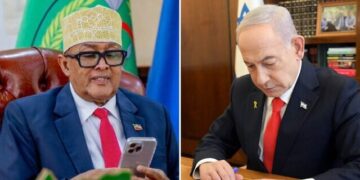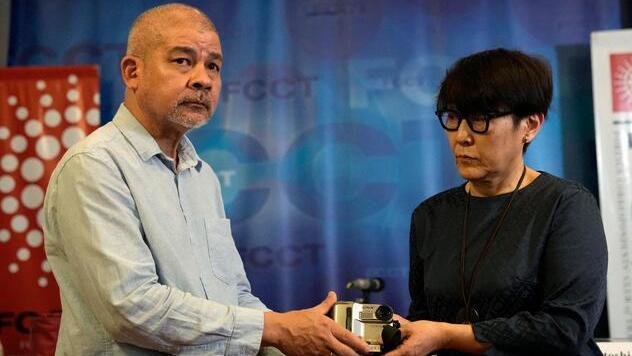By Enyichukwu Enemanna
A video camera belonging a Japanese journalist, Kenji Nagai has surfaced 15 years after the owner was fatally shot during a street protest in Myanmar.
The recording device was on Wednesday handed over to the sister of the slain journalist at a ceremony in Bangkok.
Nagai’s sister Noriko Ogawa received the small Sony Handycam from Aye Chan Naing, head of the Democratic Voice of Burma, a Myanmar media organization which was involved in its recovery.
“Thank you from the bottom of my heart,” she said. “This is a great surprise and joy for me, as I hadn’t even had any information about the camera until now.”
Kenji Nagai was recording the demonstration on Sept. 27, 2007, in downtown Yangon, part of a peaceful anti-military uprising known as the Saffron Revolution when soldiers arrived, dispersing the crowd with gunfire.
The 50-year-old journalist, who was working for Japan’s APF News was one of about 10 people killed that day.
The camera when found still had the original tape inside it. Its contents were screened at Wednesday’s event.
The images showed protesters and monks in the street close to Yangon’s ancient Sule Pagoda, singing and chanting, with police blocking their way.
Trucks full of soldiers then arrived, prompting Nagai to turn the camera on himself.
“The army has arrived. Over there, that’s the army,” he says. “I think it’s a heavily armed army. In front of the temple, it is filled with citizens. Citizens are gathering in front of the head of the Buddha. A heavily armed army truck has arrived.”
The images then appear to show people scattering. The video cut off before the fatal moment.
However, video recorded by the Democratic Voice of Burma caught the moment of Nagai’s death, as he fell down and was then apparently shot at close range by a soldier.
A photo of the incident taken by Adrees Latif of the Reuters news agency won a 2008 Pulitzer Prize.
Exact details of when and how Nagai’s camera was found and where it was kept in the intervening years remain vague. Aye Chan Naing said only that it had gone through a series of people before getting out of Myanmar.
“For obvious security reasons, we cannot go deeper into how we get out. What I can tell you is we got it through a good citizen who knew what was right and what was wrong and that is how we got it,” he said.
Nagai’s sister said she hoped an analysis of the tape would disprove the Myanmar government’s claim that he had not been deliberately targeted.
The handover of the camera comes as Myanmar is in the grip of upheaval far worse than that of 2007.
A widespread, determined armed resistance has sprung up in response to the overthrow of Aung San Suu Kyi’s elected government by the military in 2021.


































